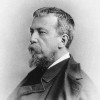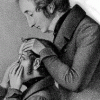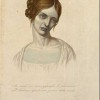
Anne Stiles, “The Rest Cure, 1873-1925”
This essay discusses the rest cure, a popular treatment for nervous illness pioneered by Philadelphia neurologist Silas Weir Mitchell in the 1860s and ‘70s. Emphasis will be placed on the spread of the cure to Britain and the role of the rest cure in literature.

Mary Wilson Carpenter, “A Cultural History of Ophthalmology in Nineteenth-Century Britain”
The date and the nature of Patrick Brontë’s cataract surgery illustrate both progress and its lack in the science and practice of British ophthalmology. The “newest” form of such surgery, cataract extraction (developed more than a century before) and the oldest, couching (more than 2,000 years old), were both being performed by British surgeons around the mid-point of the Victorian era. Ophthalmology was one of the first specializations to become a respectable profession in British medicine, but its greatest successes—such as the cure of blindness caused by cataracts—were achieved by those willing to adopt innovative surgical techniques and new medical treatments largely developed elsewhere.

Matthew Rowlinson, “On the First Medical Blood Transfusion Between Human Subjects, 1818”
The first experiments in blood transfusion took place in the seventeenth century, using blood drawn from animals. After the death of a French patient and the trial of his physician for manslaughter, transfusion was abandoned for a century and a half. When it resumed in the nineteenth century, the first trials used human blood. They were conducted by the obstetrician James Blundell, who developed transfusion to treat women suffering from hemorrhage after childbirth. During the course of the century, transfusion was applied as a remedy to different kinds of sicknesses and injuries, and performed at different times with various fluids. By the 1880s, British doctors had abandoned transfusion with blood in favor of infusion with saline solution; the practice was only again resumed after the recognition of human blood types in the twentieth century. Developments in the practice of transfusion and infusion during the century reflect shifting views of how gender and species identity are embodied, and of relations of affinity and immunity between bodies of different kinds. They also reflect a shift from a vitalist to a mechanist understanding of blood and its function.

Pamela K. Gilbert, “On Cholera in Nineteenth-Century England”
This essay will focus on how the British understood and responded to the cholera epidemics that swept Britain four times from the early eighteen-thirties to the mid-eighteen-sixties, with special attention to the first epidemic and how it related to political Reform.
